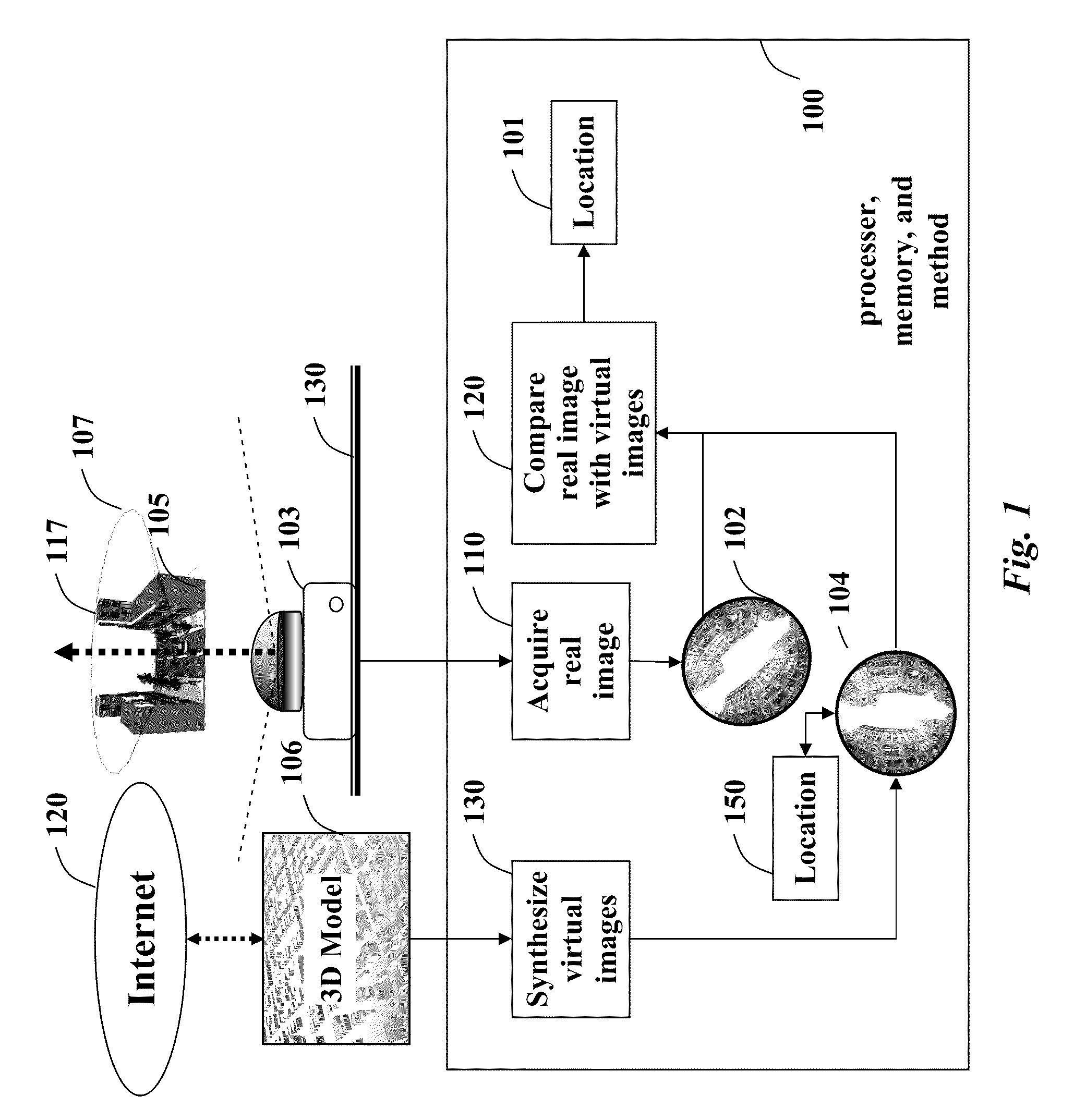Method for determining a location from images acquired of an environment with an omni-directional camera
a technology of omni-directional camera and image acquisition, applied in the field of determining a location from images acquired of an environment with an omni-directional camera, can solve the problems of difficult to access, difficult to locate, and obstructed signals by buildings, so as to improve the accuracy of location and orientation estimation, the effect of easy access
- Summary
- Abstract
- Description
- Claims
- Application Information
AI Technical Summary
Benefits of technology
Problems solved by technology
Method used
Image
Examples
Embodiment Construction
[0023]As shown in FIG. 1, embodiments of our invention provide a method and system 100 for determining a 6D location and orientation 101 in an environment 105 from a real omni-directional image 102 acquired 110 of a skyline 106 in the environment with an omni-directional visible light camera 103 at an unknown location and orientation. The optical axis 117 of the camera is oriented substantially vertical to a ground plane, which may be planar or not. The camera acquires images of the skyline in the environment. The camera can be mounted in a vehicle, or the user of the camera can just simply place the camera back on the ground plane 130.
[0024]The real image 102 is compared 120 with virtual omni-directional images 104 synthesized 130 from a 3D model 106 of the environment for known locations and orientations. The 3D model can be acquired in real-time using the Internet 120 or the 3D model can be stored in a memory of the system.
[0025]Sky Detection
[0026]As shown in FIG. 2, the real ima...
PUM
 Login to View More
Login to View More Abstract
Description
Claims
Application Information
 Login to View More
Login to View More - R&D
- Intellectual Property
- Life Sciences
- Materials
- Tech Scout
- Unparalleled Data Quality
- Higher Quality Content
- 60% Fewer Hallucinations
Browse by: Latest US Patents, China's latest patents, Technical Efficacy Thesaurus, Application Domain, Technology Topic, Popular Technical Reports.
© 2025 PatSnap. All rights reserved.Legal|Privacy policy|Modern Slavery Act Transparency Statement|Sitemap|About US| Contact US: help@patsnap.com



